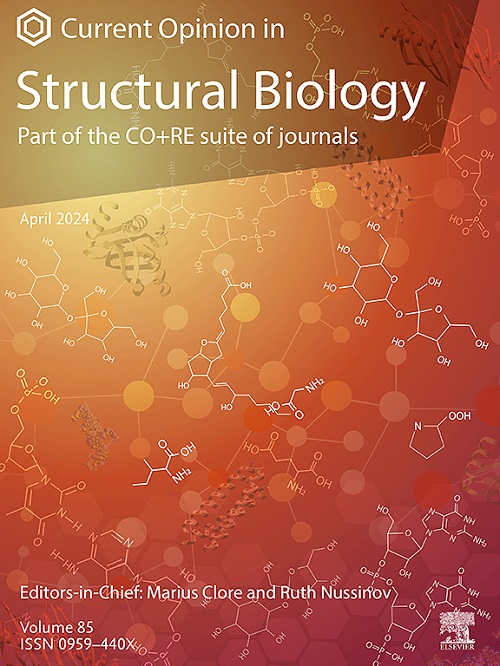In situ cryo-electron microscopy and tomography of cellular and organismal samples
IF 6.1
2区 生物学
Q1 BIOCHEMISTRY & MOLECULAR BIOLOGY
引用次数: 0
Abstract
As cryo-electron microscopy (cryo-EM) and cryo-electron tomography (cryo-ET) continue to advance, the ability to visualize cellular and organismal structures with unprecedented clarity is redefining the landscape of structural biology. Breakthroughs in imaging technology, sample preparation and image processing now enable the detailed elucidation of cellular architecture, macromolecular organization, and dynamic biological processes at sub-nanometer resolution. Recent methodological advances have propelled the field to new frontiers, facilitating the investigation of complex biological questions across scales—from macromolecular complexes to organism-wide structural insights. This review explores rapidly emerging trends, highlights key innovations that are pushing the boundaries of in situ structural biology, and addresses persistent challenges in expanding the applicability of cryo-EM and cryo-ET across diverse biological systems.
细胞和有机体样品的原位冷冻电子显微镜和断层扫描
随着低温电子显微镜(cryo-EM)和低温电子断层扫描(cryo-ET)的不断进步,以前所未有的清晰度可视化细胞和生物体结构的能力正在重新定义结构生物学的景观。在成像技术、样品制备和图像处理方面的突破,现在可以在亚纳米分辨率下详细阐明细胞结构、大分子组织和动态生物过程。最近的方法进步将该领域推向了新的前沿,促进了跨尺度复杂生物学问题的研究——从大分子复合物到整个生物体的结构见解。这篇综述探讨了快速出现的趋势,强调了推动原位结构生物学边界的关键创新,并解决了在扩大低温电镜和低温电镜在不同生物系统中的适用性方面的持续挑战。
本文章由计算机程序翻译,如有差异,请以英文原文为准。
求助全文
约1分钟内获得全文
求助全文
来源期刊

Current opinion in structural biology
生物-生化与分子生物学
CiteScore
12.20
自引率
2.90%
发文量
179
审稿时长
6-12 weeks
期刊介绍:
Current Opinion in Structural Biology (COSB) aims to stimulate scientifically grounded, interdisciplinary, multi-scale debate and exchange of ideas. It contains polished, concise and timely reviews and opinions, with particular emphasis on those articles published in the past two years. In addition to describing recent trends, the authors are encouraged to give their subjective opinion of the topics discussed.
In COSB, we help the reader by providing in a systematic manner:
1. The views of experts on current advances in their field in a clear and readable form.
2. Evaluations of the most interesting papers, annotated by experts, from the great wealth of original publications.
[...]
The subject of Structural Biology is divided into twelve themed sections, each of which is reviewed once a year. Each issue contains two sections, and the amount of space devoted to each section is related to its importance.
-Folding and Binding-
Nucleic acids and their protein complexes-
Macromolecular Machines-
Theory and Simulation-
Sequences and Topology-
New constructs and expression of proteins-
Membranes-
Engineering and Design-
Carbohydrate-protein interactions and glycosylation-
Biophysical and molecular biological methods-
Multi-protein assemblies in signalling-
Catalysis and Regulation
 求助内容:
求助内容: 应助结果提醒方式:
应助结果提醒方式:


